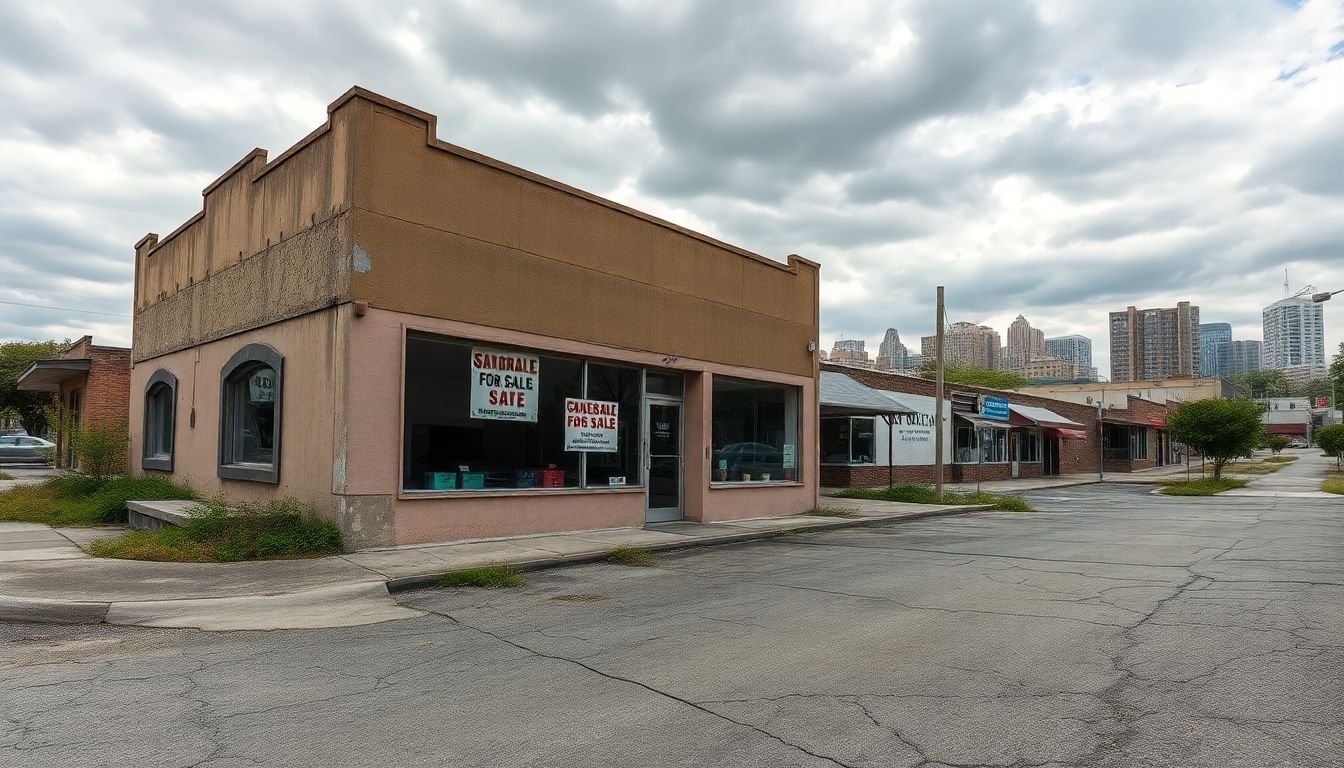Introduction
When launching or expanding your business, you need a good location for a reasonable price. Commercial real estate can erode your profits pretty fast. Some locations may be cheaper but still have the potential. Markets with low entry points can also give small business owners and investors reasonable cost advantages for quicker growth. If your quest has led you to finding the cheapest of commercial properties, then this guide is meant for you. Understand what to look for, ponder on, and how best to invest.
Factors that Affect Commercial Property Prices in the USA
Location and Regional Economic Changes
Foremost comes the matter of location. Commercial real estate in the urban property will be more expensive than that of rural areas and smaller towns. Bigger cities are usually more expensive because they attract the establishment of more businesses and movement of more people in these areas. Certainly, the property costs depend on the local economic health. Wherever development is undertaken fast, such an area finds properties expensive and vice versa where slow or declining development happens. The job prospects in the area have to be asked about, too, and if they are developing in a positive direction in their future.
Property Type and Size
Not all properties are created equal. There are some commercial properties, for example, retail stores, offices, warehouses, even land- not all have the same price tag. By generalization, land and small properties are the most affordable; larger buildings cost more but could bring in higher returns. Budget and plans show you what sizes/ types fit you best.
Market Trends and Timing
Markets behave differently depending on the occurrence of certain factors. Buying low saves you cash. Sometimes, sudden changes in the economy or things like pandemics open an opportunity for sale. Peripheral news surrounding market changes will inform you of a buying opportunity. Prices fall in times of recession or low growth, only to rise again at a later stage.
Regions for Cheap Commercial Properties
Small Towns and Rural Areas
Many of the lands and properties priced high lie subject to rural towns. They would most probably cost so much less to begin with. Assuming none of the land and little buildings up there have pretty cheap offerings, any may be says to be a profit-making type when demand is up. The demand fortunately will lack because of the limits on infrastructure.
A Few States with Low Property Prices
There are a few states that shine out at low prices when it comes to commercial real estate. Mississippi, Alabama, Arkansas, and Kentucky usually have the lowest cost per square foot. The economies in these states seem to move a bit slower, and the properties are cheaper. Opting for these states would best capitalize on future growth or serve as an option with a lower upfront investment while these states are financed.
Emerging Markets and Secondary Cities
Secondary cities are those that are in close proximity to great metropolitan hubs, yet can be counted among those in the emerging towns. Examples are Toledo, Ohio; Shreveport, Louisiana;
Finding Cheap Commercial Properties: Sources and Strategies
Start with a search for available listings on LoopNet or Zillow Commercial. Talk to some local real estate agents for a good grip on the local market and the availability of some hidden gems. Auctions and foreclosure sales are some treasure chests to crack for good deals. The distressed properties may not be that scary; they could be one heck of a deal if refurbished.
Due Diligence and Risk Assessment
Always check the property and title before buying. Study the area economic trends and population growth. Have a look at local zoning laws and infrastructure. Knowing the risks keeps you away from surprises and helps ensure your investment is solid.
Financing Options and Incentives
Generally, smart financing is needed for low-cost properties. Business loans, small business grants, or local tax incentives usually help secure the buy. Certain incentives in some states and cities target those who plan developmental activities in historically underutilized areas. Essentially, negotiate loan terms that will prevent meaningful increase in the total cost.
Advantages and Disadvantages of Cheap Commercial Property
Advantages:
Cheap means less cash in but also less risk. The rental demand in underserved markets will take off quickly and improve your cash flow. With the regional growth, your property may even appreciate in value. The cheaper the property, the more opportunity to turn an even higher profit.
Disadvantages:
Cheap does not mean without property issues. Some may be really old, or repairs may be called for. There may not be much demand in weak economies for these properties. Properties may also be far away, leading to difficulty in management. Achieving success will require patience and an exceptional maintenance plan.
Expert Knowledge and Exceptional Case Examples
Many investors succeed by keeping their attention in affordable markets. Old buildings, for example, have become great investments for small-town entrepreneurs who bought them cheap and turned them into thriving businesses. Experts advise that future growth indicators should be the highlights attracting smart buyers and not just price tags today.
Conclusion
It may not be an impossible journey, in fact, quite possible in looking for cheap commercial property in the US. Focus on rural areas, some secondary cities, and a few states having low-priced properties. Combine efforts on the task through the Internet, locals, and auction markets in search of hidden deals. Get an education: research local economies, property conditions, and legal rules. Anything is attractive if you have faith and work smart on viable property options to enhance either your business or investment portfolio-start by going small, target upcoming markets, and see where you may find your next big opportunity.
